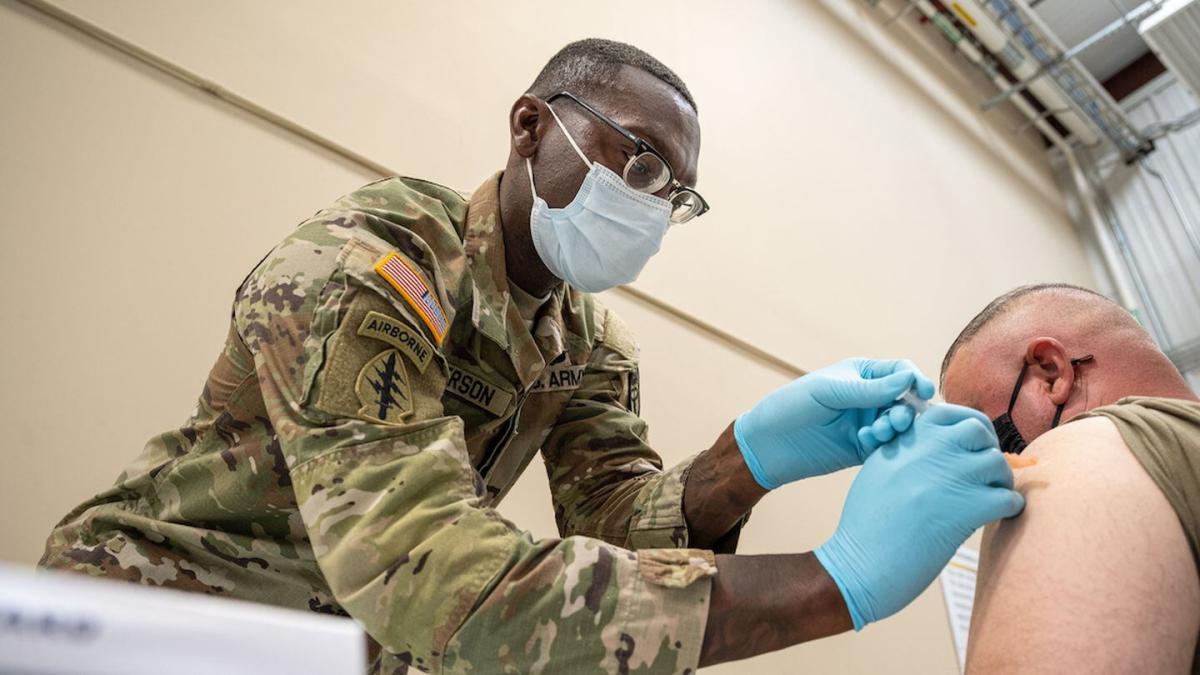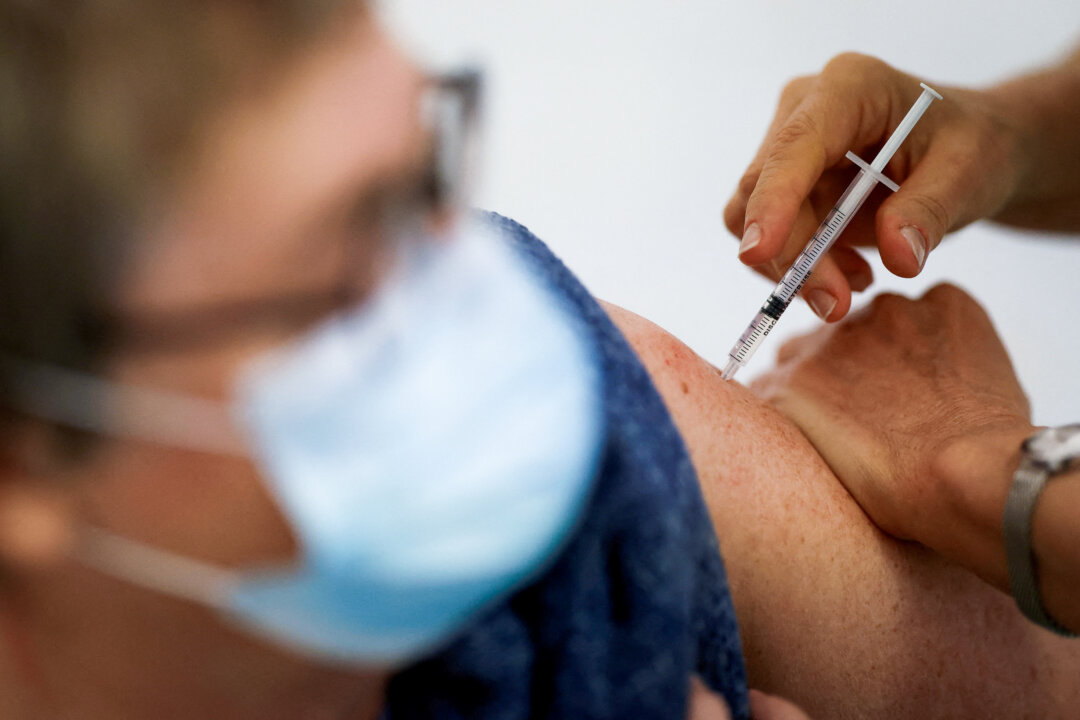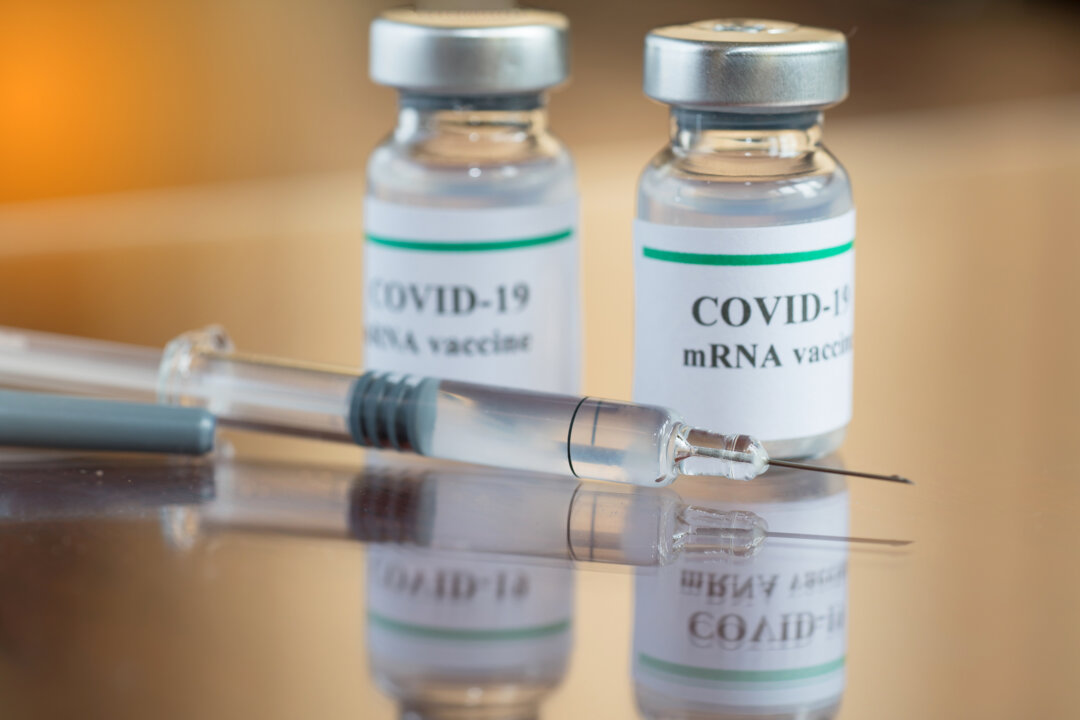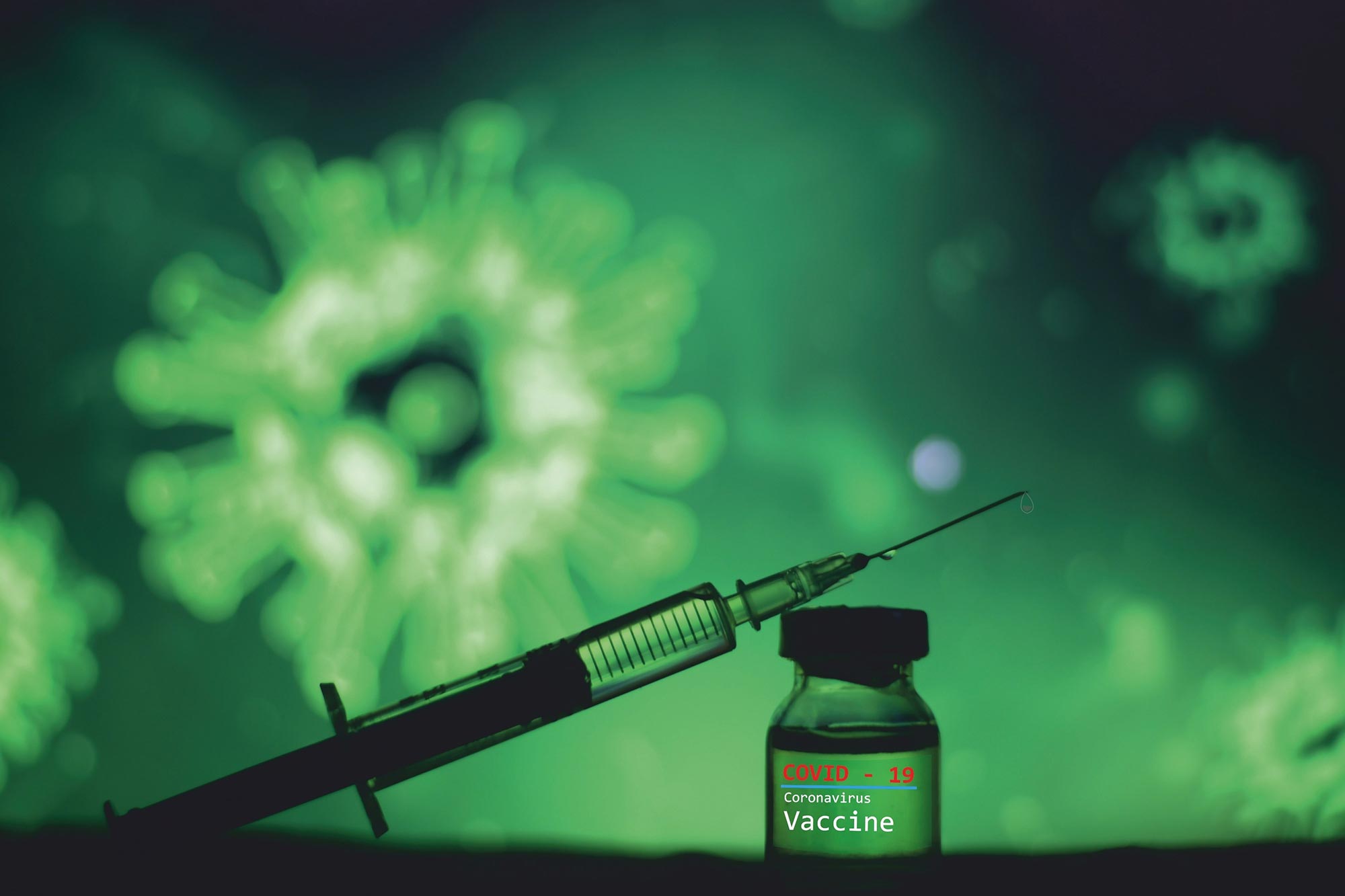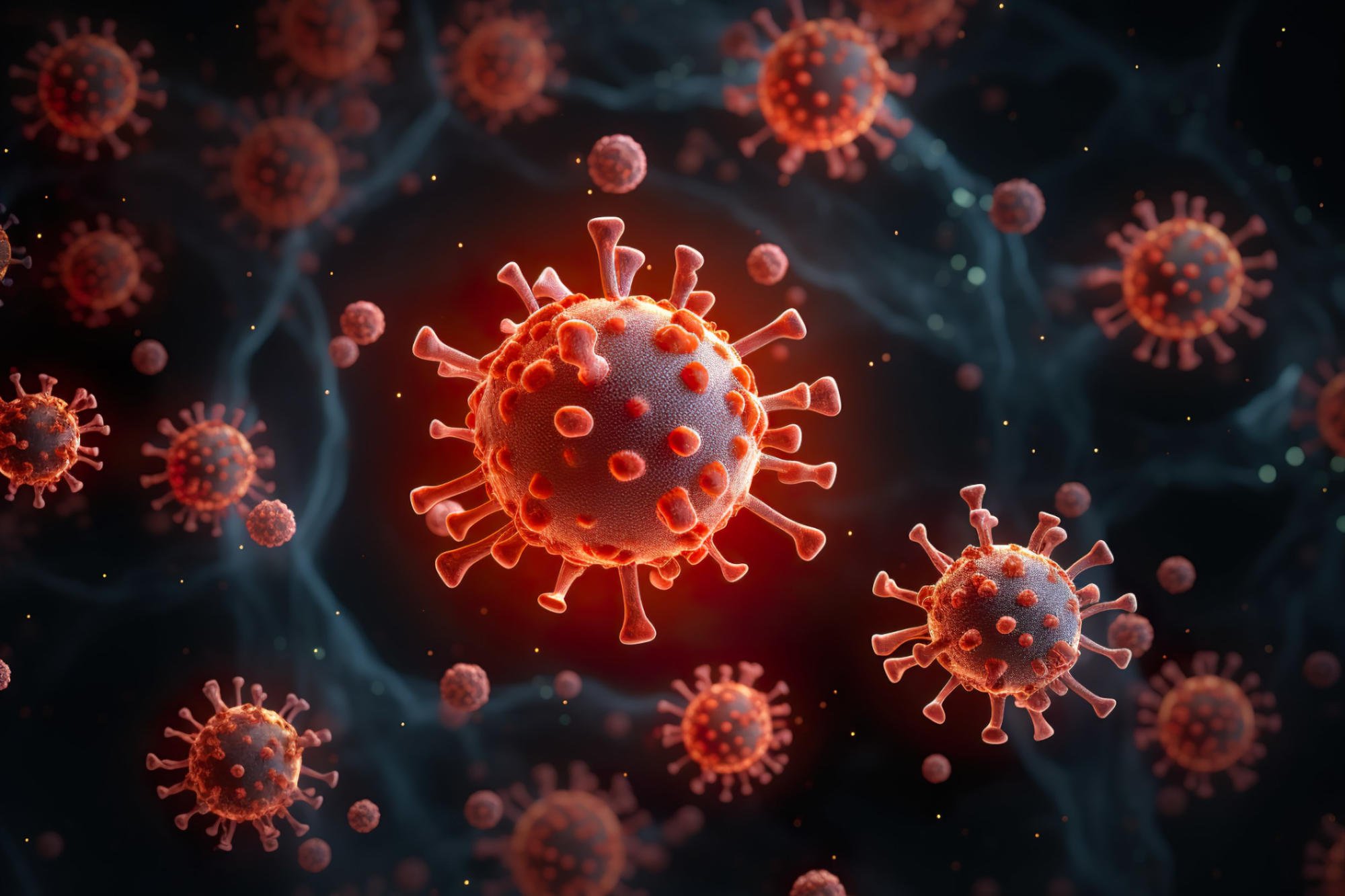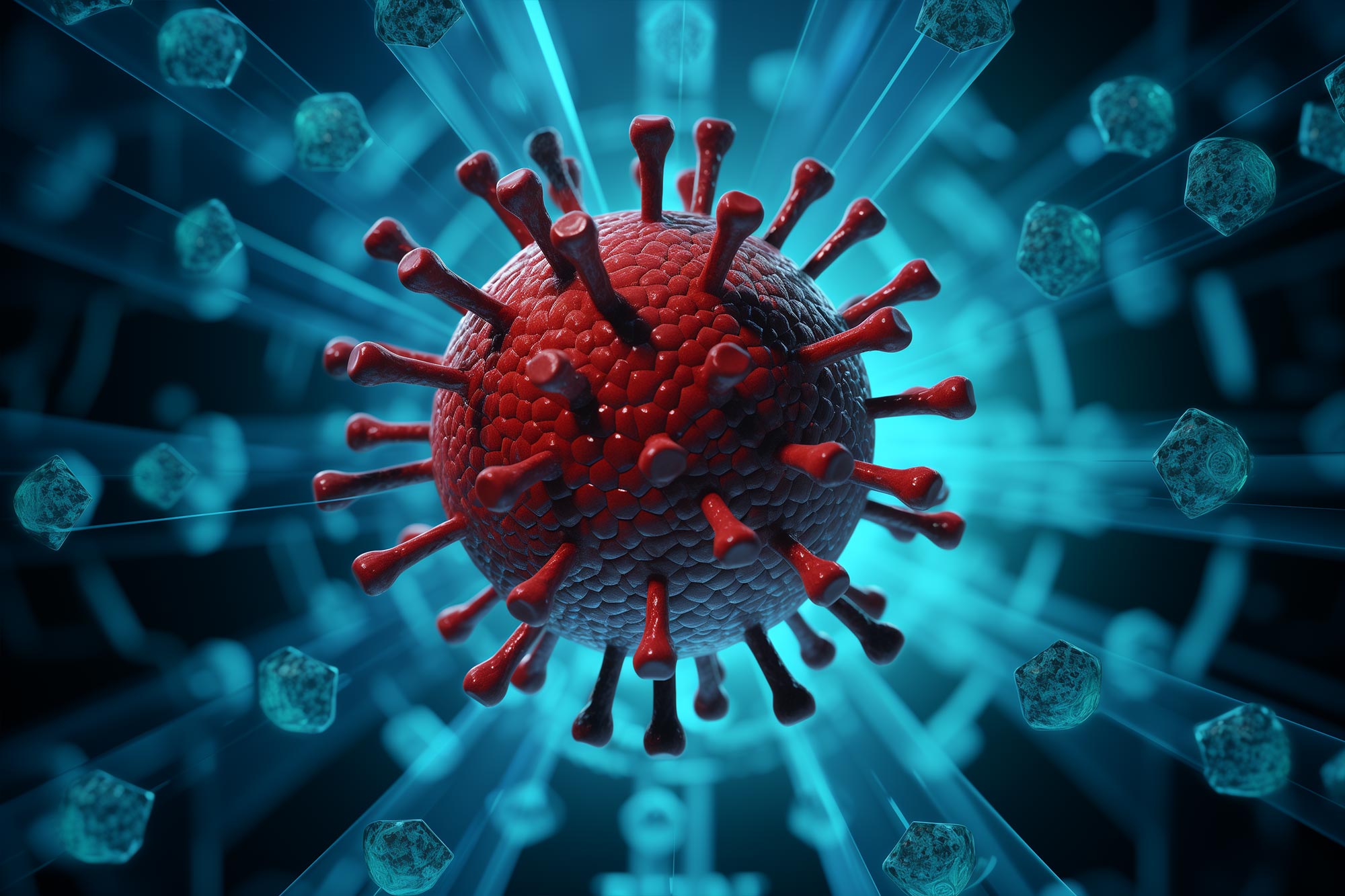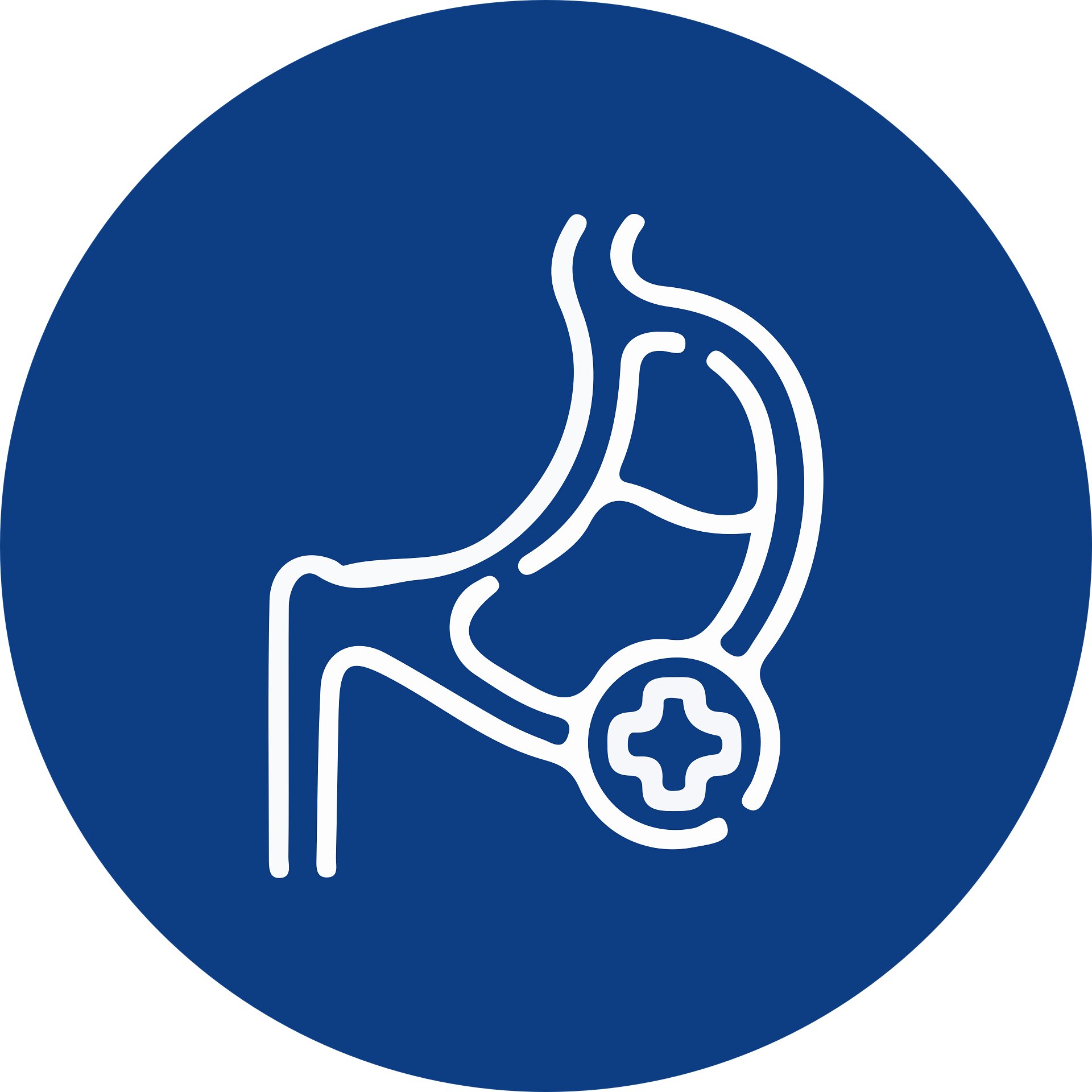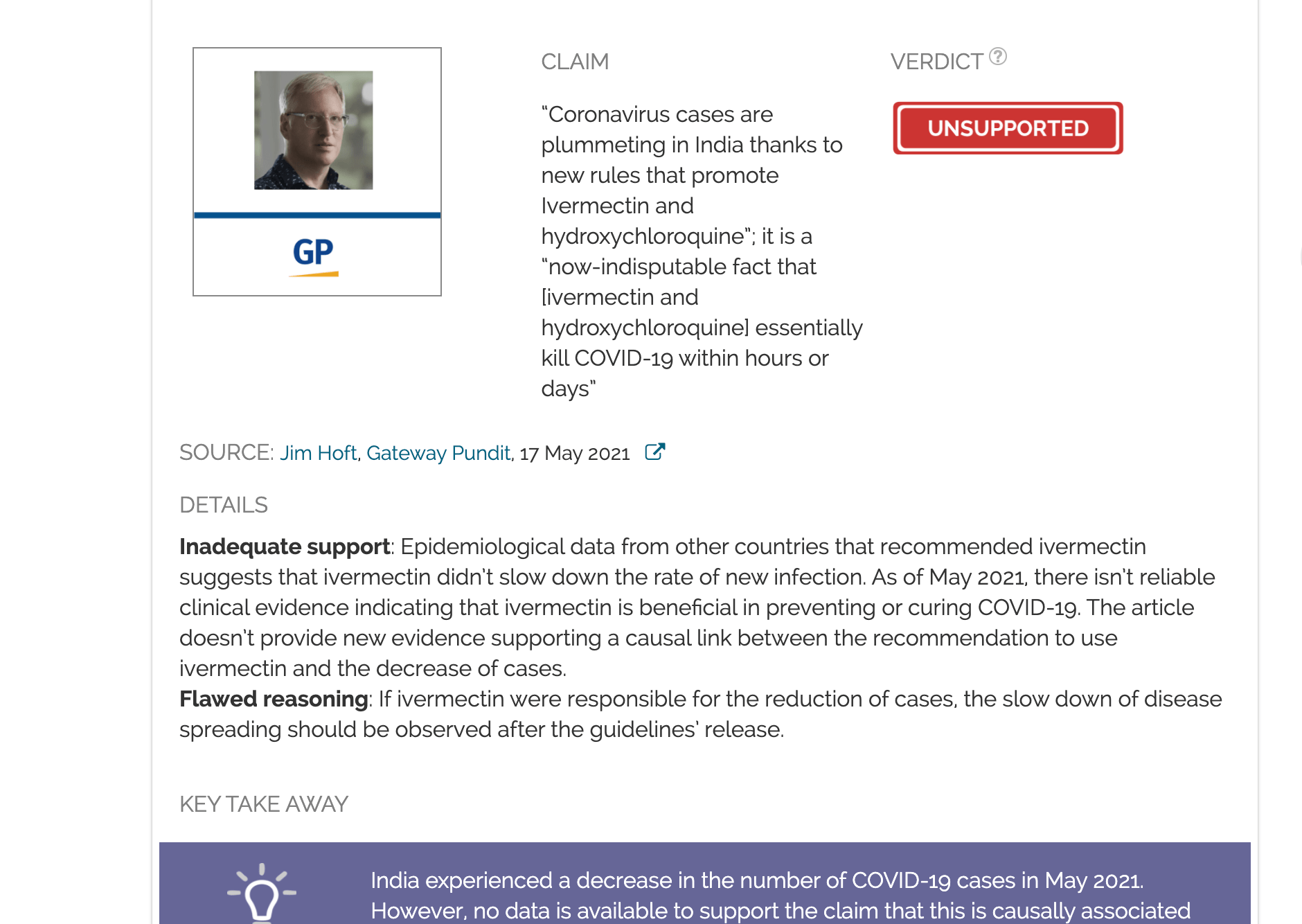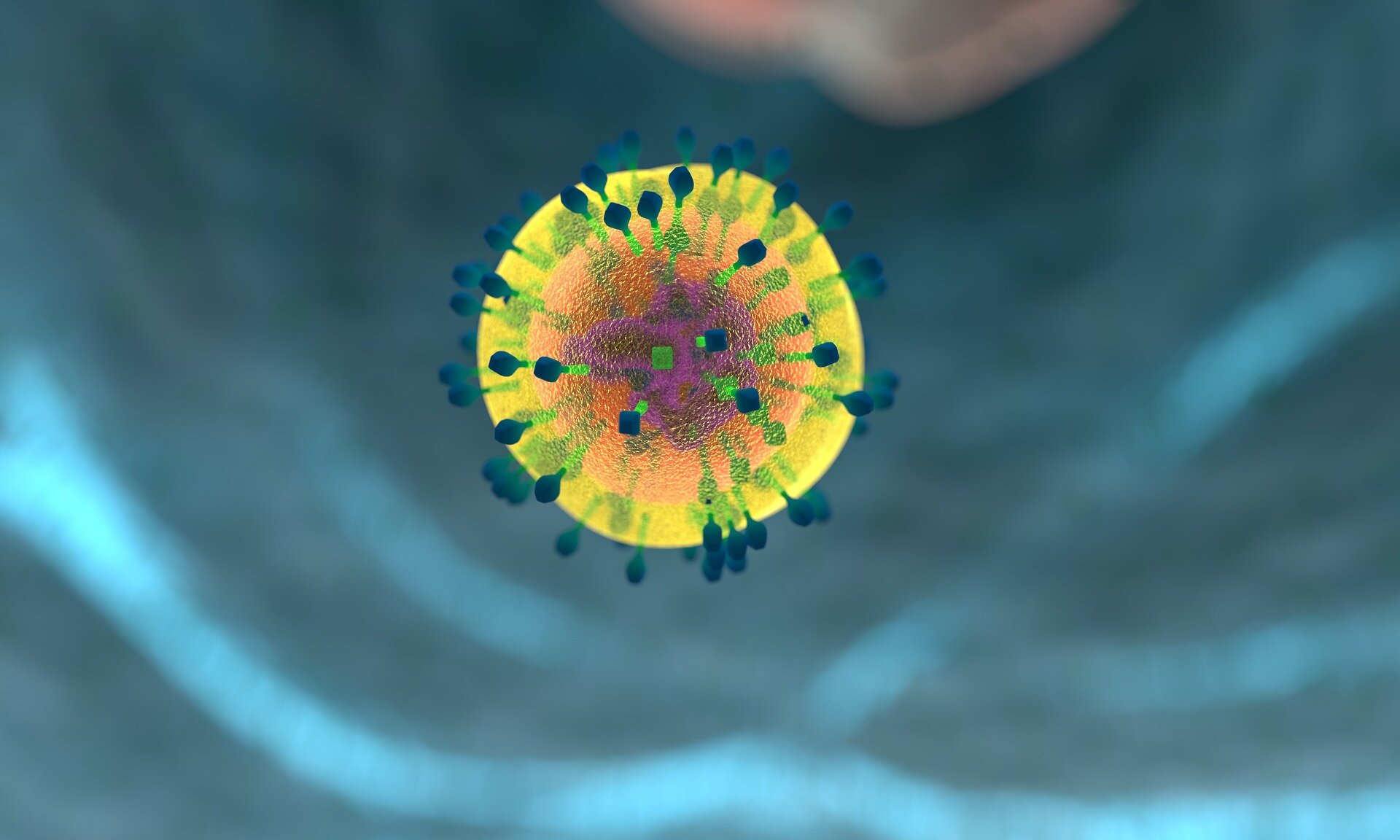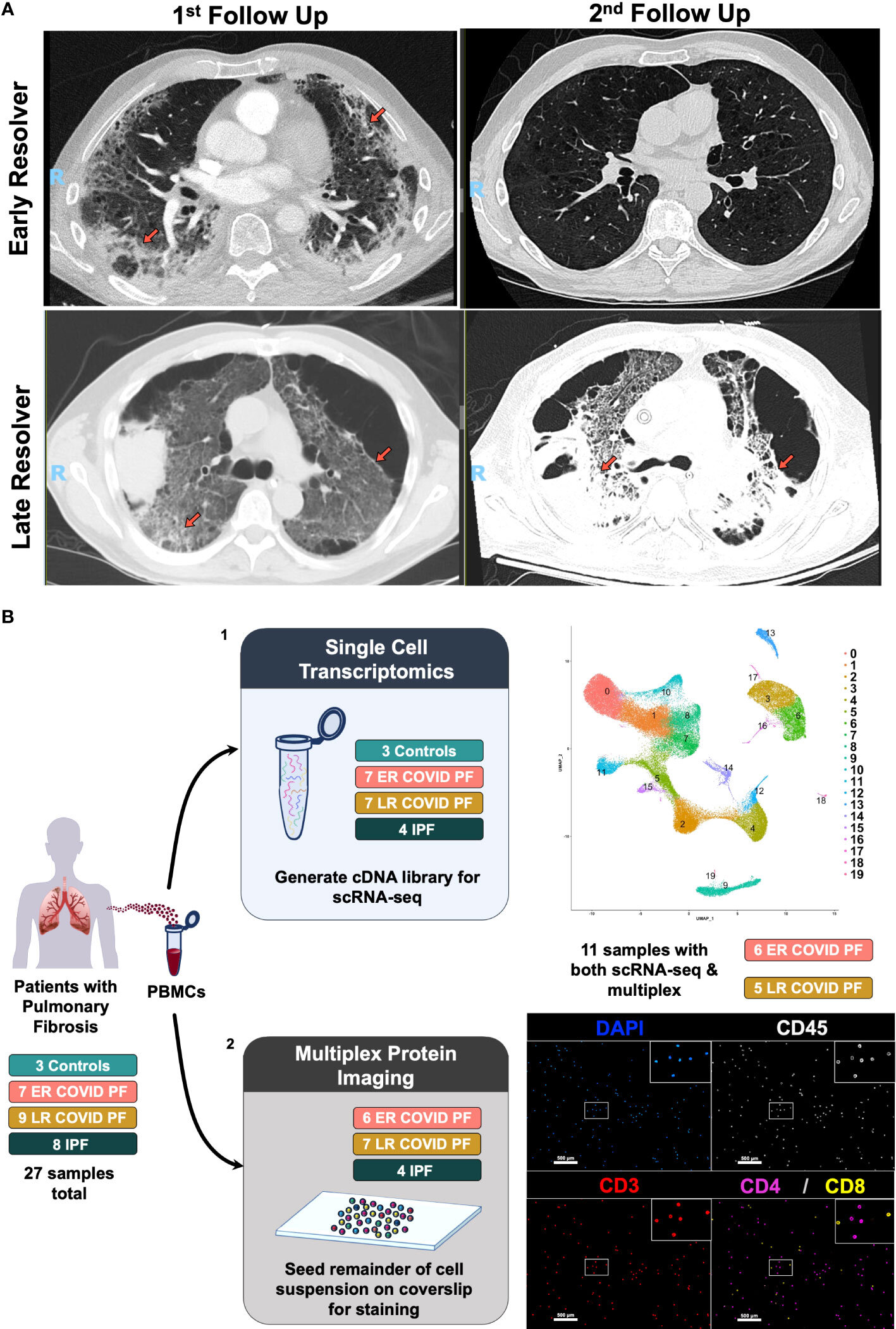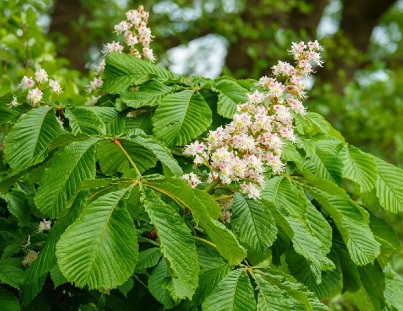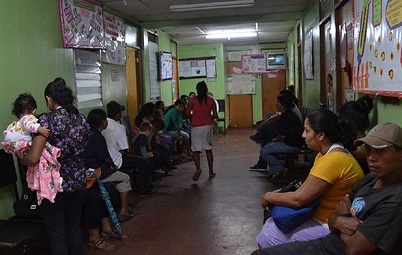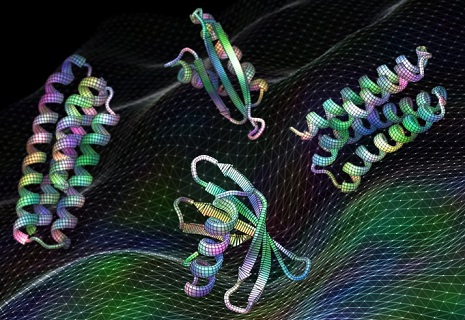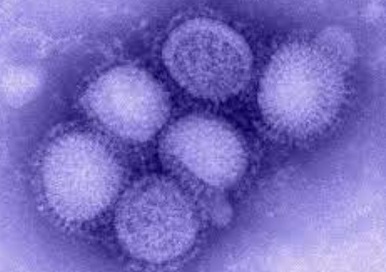The quieter it gets around the acute cases of (severe) Covid-19 disease, the more worried I become...
 Geert Vanden Bossche
Geert Vanden Bossche
Mar 22, 2024
A couple of months ago, a colleague was publicly attacking me and ridiculing me for predicting a major storm of severe Covid-19 (C-19) disease in highly C-19 vaccinated populations. While calling himself a vaccinologist, this person clearly doesn’t understand the interplay between the immune system and the evolutionary dynamics of SARS-CoV-2 (SC-2).
Although eager to learn from me at the outset of the mass vaccination campaign, this colleague now derogatorily refers to me as the veterinarian who, in support of his arguments, cites the effect of mass vaccination against Marek's disease. Nevertheless, that person knows all too well that I have always maintained that the example of Marek's disease vaccination is anything but applicable to the effect of mass vaccination during the current SC-2 pandemic. Instead of learning from my online course (
Geert's Books and Lectures), this individual prefers to take the easy way out and simply dismisses my predictions as ‘irresponsible.’
Because I attach no importance to the prattle of those who deny vaccination-associated viral immune escape,
I want to reiterate my predictions for the last time here. They remain unchanged even though the timeline has drastically changed compared to the initially projected timeline.
As I have repeatedly indicated, this change occurred because I did not take into account a hitherto unknown phenomenon at the time, namely that of vaccination-associated immune refocusing. This phenomenon is directly caused by the mechanism of action of mRNA vaccines (see my book: “The inescapable immune escape pandemic”;
Geert's Books and Lectures), or indirectly as a result of breakthrough infections of individuals previously immunized with any C-19 vaccine.
My most recent insights into the immune response in vaccinated individuals are shared weekly with my online students. They are among the few who understand why I am rightly very concerned. I do not wish to overwhelm the many who, due to a lack of understanding of this complex matter, have meanwhile lost credibility in my predictions. Instead, I simply invite them to verify the following predictions. These are predictions of what will precede the anticipated tsunami in highly C-19 vaccinated countries:
-Infections with SC-2, normally typically presenting as acute self-limiting illnesses, are increasingly transitioning into chronic conditions. Cases of chronic illness due to SC-2 will increasingly constitute the bulk of the so-called ‘long Covid’ cases and almost exclusively occur in C-19 vaccinated individuals.
-More isolated cases of severe C-19 disease will contribute to the vaccine-associated excess deaths while C-19 hospitalization and death rates will remain relatively low.
-The concentration of SC-2 virus in wastewater (comprising all circulating variants) will also remain low.
-The JN.1. clade will comprise the dominant circulating lineages in highly C-19 vaccinated countries while many other subvariants are co-circulating at a much lower rate (e.g., BA.2.86, XBB.1.5, EG.5.1 and JN.1, JD.1.1, GE.1.) .
-More subdominant variants can emerge, but they won’t displace the JN.1 clade due to lack of higher transmissibility.
-The incidence of long Covid will steadily increase during this spring to then transition in a tsunami of antibody (Ab)-independent enhancement of severe C-19 disease. This mega-wave will thus occur even further outside the winter season.
-C-19 disease and mortality are not only no longer seasonal, they are also no longer age-dependent but mainly associated with the administration of (2 or more doses of) C-19 vaccines.
-High waves of severe C-19 disease will occur independently of each other, first in countries that used mRNA vaccines for mass vaccination.
-The unvaccinated are already becoming less frequently significantly ill, and this situation will only improve as the immune escape pandemic will evolve and escalate.
In Africa, little of this nefarious evolution will be noticeable because the vast majority of African countries did not have the 'privilege' of undergoing mass vaccination.
The increasing decline of acute, symptomatic infections leads our public health authorities and so-called experts to mistakenly believe that the worst part of the C-19 pandemic is behind us, and that the virus has now transitioned into endemicity thanks to herd immunity! They seem to ignore that the virus is still highly transmissible and evolving. As the majority of infections in highly C-19 vaccinated countries no longer follow the typically acute self-limiting course, but instead exhibit a more prolonged or even chronic nature, much of the attention previously focused on acute cases of (severe) C-19 disease has now shifted to other news items, which, while distressing, are still less threatening than the insidious immune escape pandemic.
For those interested in delving into the immunology behind the transition from acute symptomatic infection to a prolonged course of C-19 disease, the following explanation may be of interest:
The absence of herd immunity facilitates recurrent vaccine breakthrough infections (VBTIs) driven by new emerging variants with a steadily increasing level of infectiousness, leading to the formation of large virus-Ab complexes that are readily taken up by antigen-presenting cells (APCs) to activate cytotoxic T lymphocytes (CTLs). Enhanced clearance of virus-infected host cells by these CTLs promotes asymptomatic/subclinical viral shedding. This phenomenon is currently fueling sustained viral transmission and immune selection pressure on viral reproduction (as manifested by mutations in other viral proteins).
However, as JN.1 and its descendants change the interaction between the virus and APCs, including upper respiratory tract (URT)-resident dendritic cells (DCs), from virus internalization to virus adsorption, there is an increased demand for polyclonal non-neutralizing antibodies (PNNAbs) to effectively ‘neutralize’ viral virulence. While the formation of large viral-Ab complexes following VBTIs, facilitated by low-affinity Abs, enhances viral uptake by APCs rather than prompting the recall of PNNAbs, the concentration of the latter declines to suboptimal levels, exerting immune selection pressure on viral virulence.
This process sets the stage for the emergence of new variants that can broadly evade the virulence-inhibiting PNNAbs in highly C-19-vaccinated populations.
Understanding the evolutionary dynamics of the virus-Ab interactions during an immune escape pandemic in highly C-19 vaccinated populations is key to understanding the pivotal transition from acute self-limiting URT infection over subacute self-limiting pulmonary disease and, eventually, to chronic disease symptoms in distal organs (commonly referred to as 'long Covid').
The preceding explanations illustrate why I have consistently used the following one-liners to describe the direness of the situation:
"Societies in highly C-19-vaccinated countries will be caught off guard."
"Africa will win."
"We are currently witnessing the calm before the storm (tsunami)."
"When two dogs fight over a bone (alluding to the conflict between stakeholders and opponents of the mass vaccination program), the third (referring to the virus) will run away with it" or "Many parties are vying for control, but no one can master the virus."
"Scientists and public health authorities are no longer seeing the forest for the trees."
"It was highly predictable that the C-19 mass vaccination program could only lead to catastrophic consequences."
"Only Nature has the ability to restore the disrupted balance between the virus and immunity.”
While that colleague prefers not to engage in the more rigorous work but rather to 'check back in a couple of months', I reiterate that such a casual approach will undoubtedly fail to mitigate the crisis, as it will not provide sufficient time for any actions to be implemented aside from severe lockdowns.
Therefore, I believe it's imperative for someone to undertake a comprehensive effort to not only assess the immune pressure that highly C-19 vaccinated populations are currently exerting on viral virulence but also to communicate and elucidate this information, no matter how unpleasant, to the broader public:
I estimate the likelihood of a new variant emerging capable of evading the virulence-inhibiting effect of the PNNAbs to be 50% before the end of April 2024 and 99% before the end of June 2024.
Back in 2015, I designed some well-characterized neopeptide constructs capable of educating NK cells to recognize pathologically altered host cells upon intradermal administration. In my view, these constructs could serve numerous prophylactic and therapeutic purposes, including training NK cell-mediated innate immunity in C-19 vaccinees, thus offering them the same ‘training’ status as those who are unvaccinated. Previously, the unvaccinated had to endure symptoms and discomfort to attain this training status.
However, these pure, unadjuvanted constructs could provide such targeted training without inducing symptoms of C-19 disease or any side effects. However, even if I manage to find a team of scientists willing to collaborate on advancing this NK cell-enhancing platform, it's disheartening to realize that clinical trials would come far too late, preventing timely licensing of an adequate neopeptide. My intention has always been to make this technology available to all whose health could potentially benefit from it….
The sole alternative, not reliant on immunity, for fully vaccinated individuals to potentially diminish the risk of contracting enhanced severe C-19 disease is the prophylactic use of antivirals. These antivirals must be safe, broadly effective (i.e., against all circulating SC-2 variants), and would need to be made accessible in sufficient quantities at an affordable cost.
Last, I expect that this communication will likely prompt another call from my colleague, urging the broader public once again to 'stop listening to my predictions of doom and gloom that keep getting recycled and updated every six months'.
He travels the world to complain about backstabbing and the lack of an open and scientific debate. Sometimes, when I hear his criticism, I cannot help but think of the saying: 'The pot calling the kettle black…'
A couple of months ago, a colleague was publicly attacking me and ridiculing me for predicting a major storm of severe Covid-19 (C-19) disease in highly C-19 vaccinated populations. While calling himself a vaccinologist, this person clearly doesn’t understand the interplay between the immune...

voiceforscienceandsolidarity.substack.com
